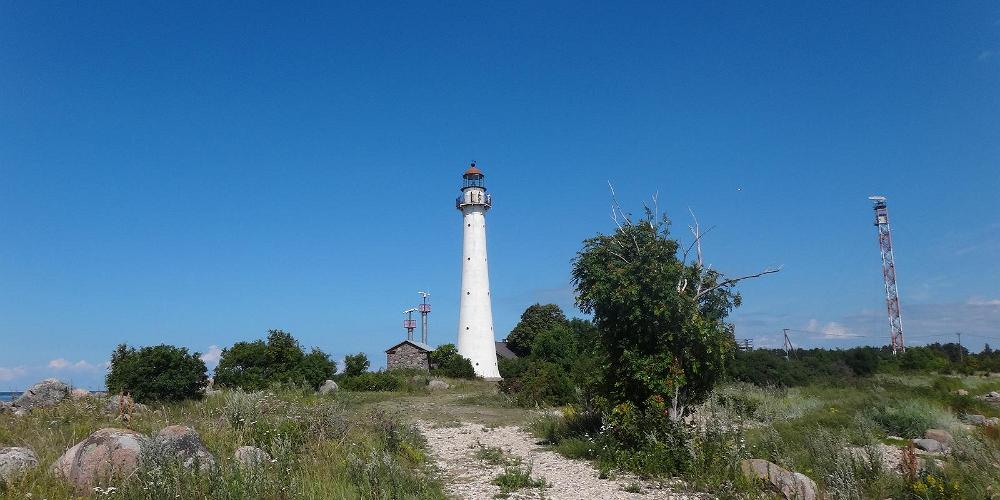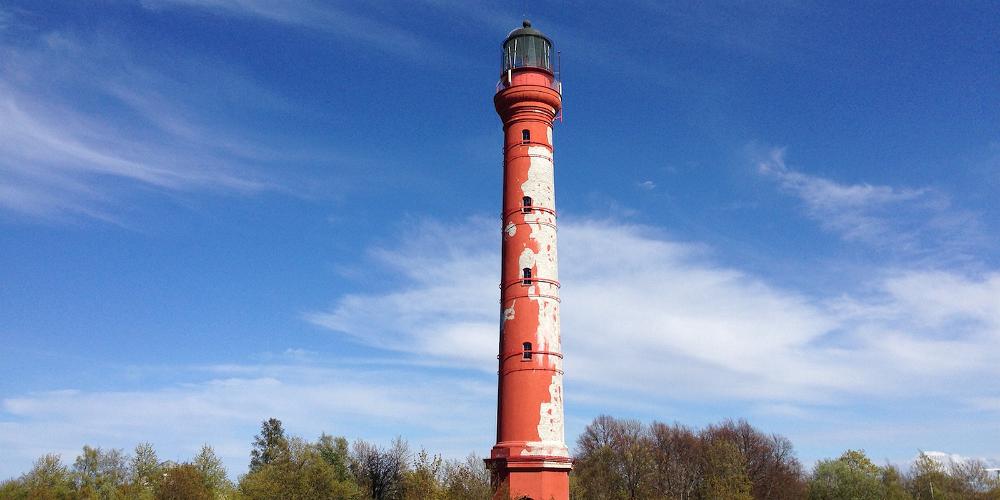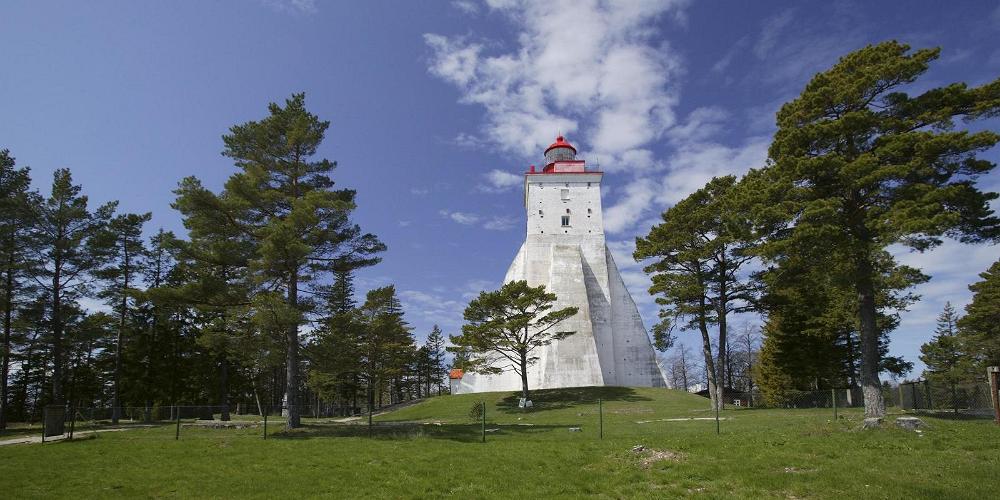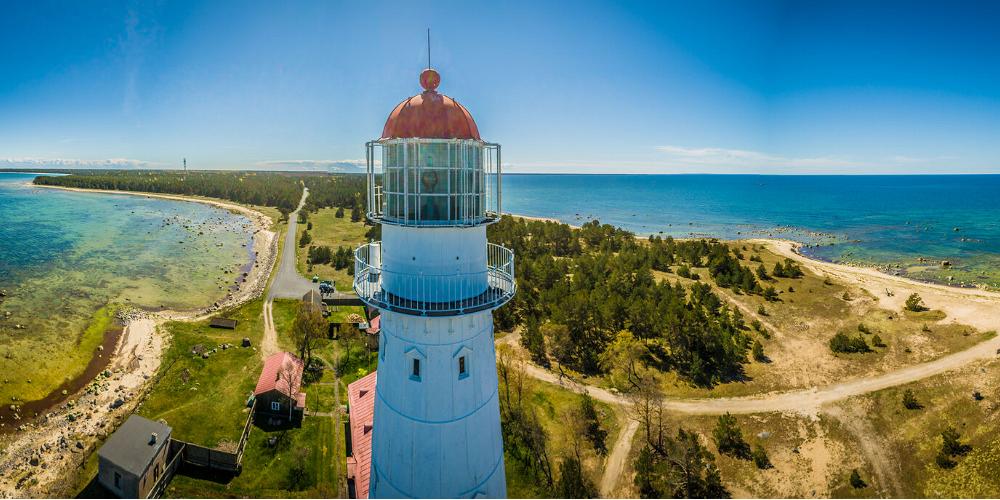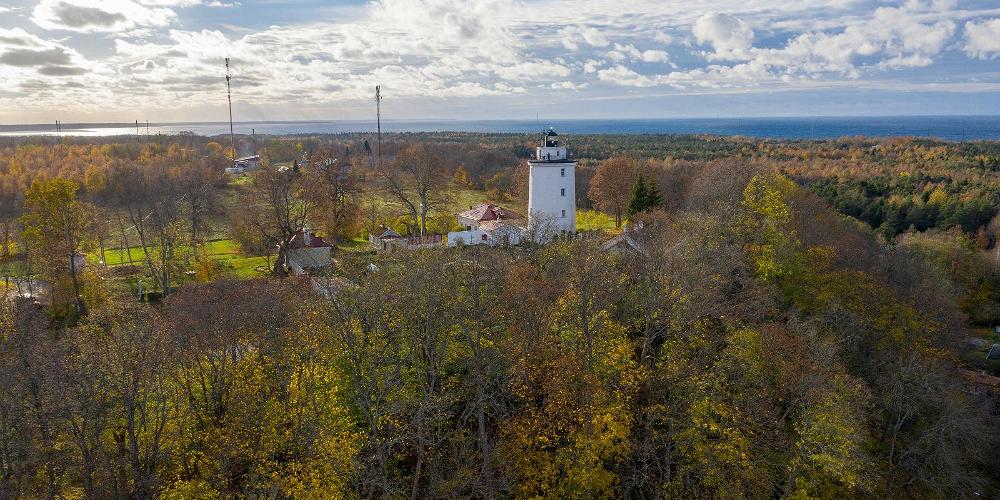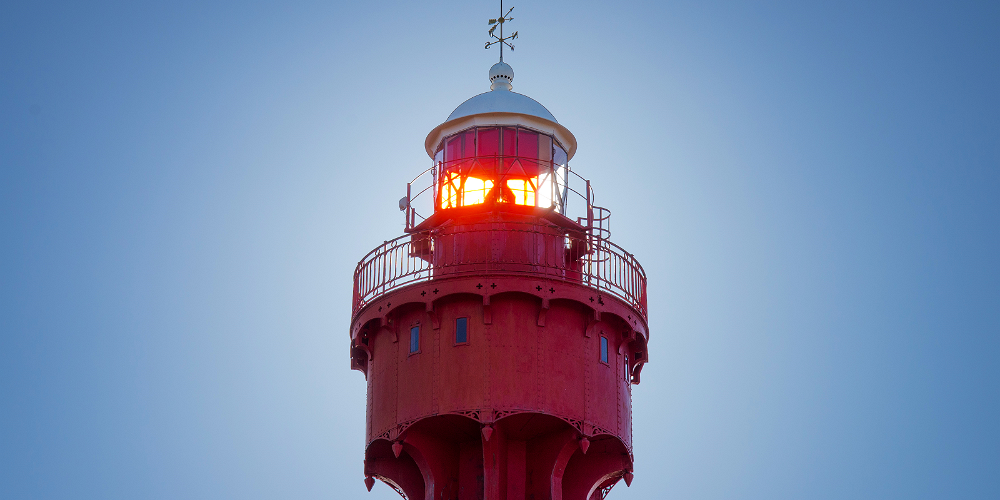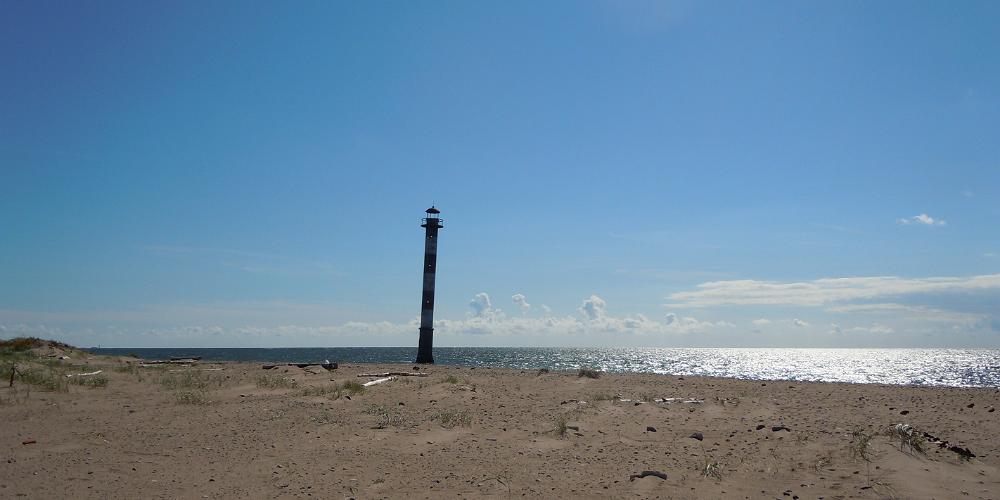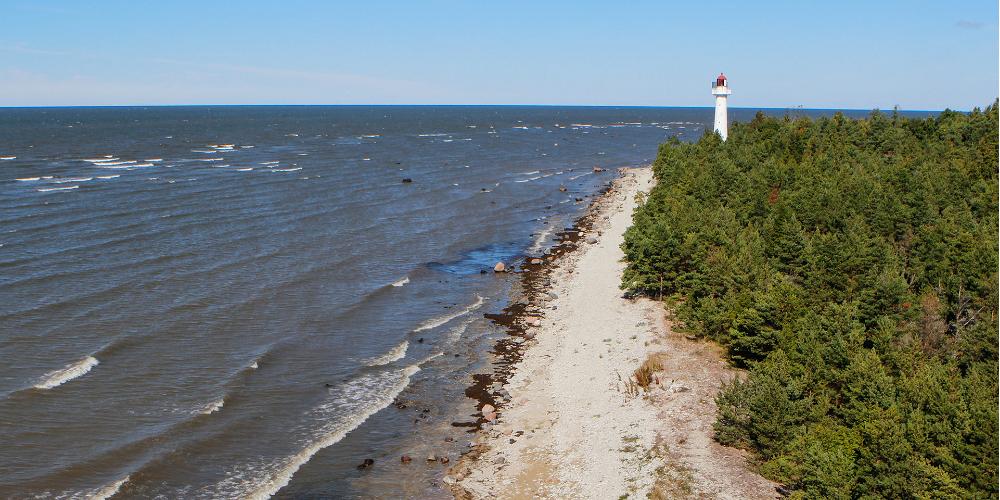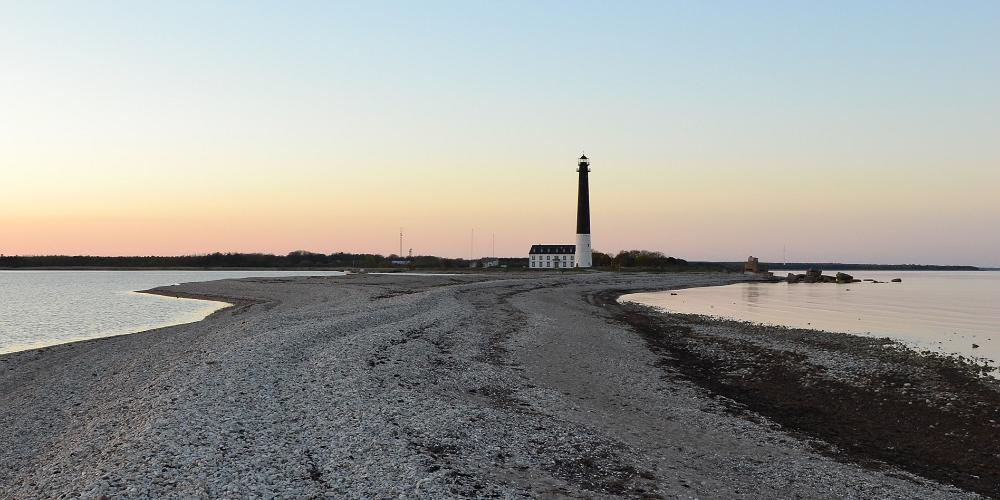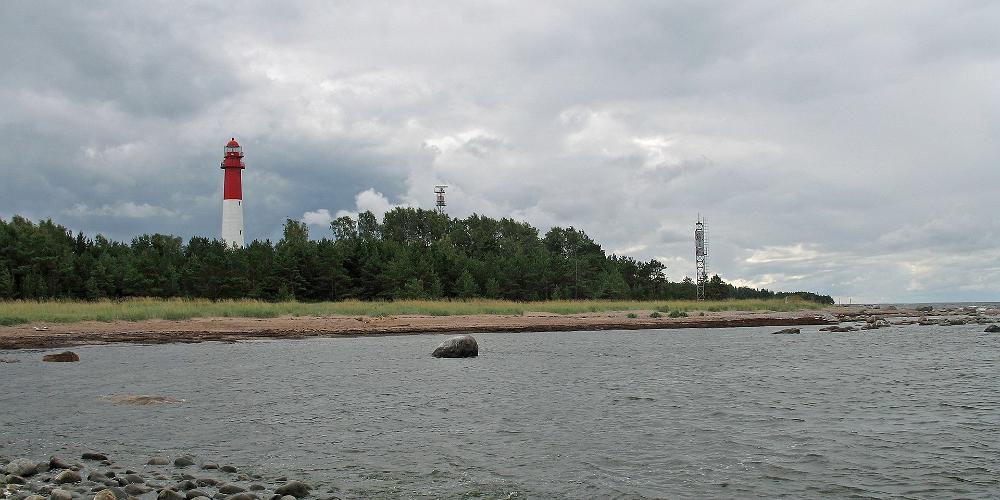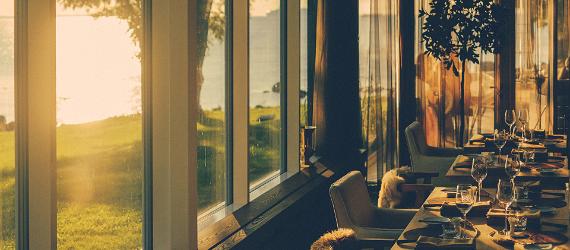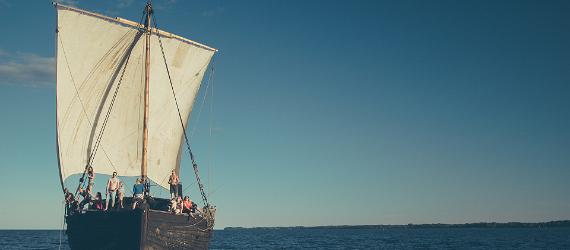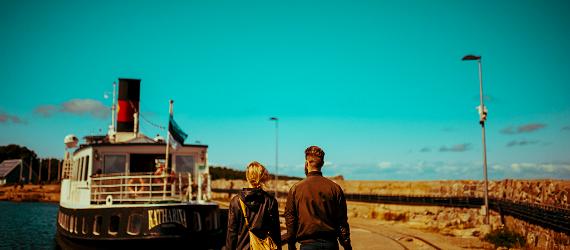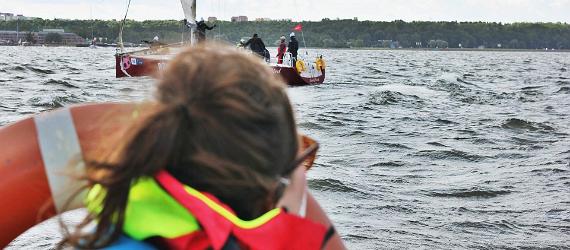With over 3,700 km of coastline, Estonia is a seafaring nation with a strong nautical heritage. Lighthouses dot islands and beaches, historically guiding Baltic sailors to safety. The 500-year-old Kõpu lighthouse is the world’s third oldest in continual operation. At 42.7 m high, the Tahkuna lighthouse in Hiiumaa is Estonia’s tallest. Anyone who loves the sea will be delighted by this tour, as Estonian lighthouses are located on some of the most stunning peninsulas and coasts in the country. Some lighthouses can be ascended and offer panoramic views, while others can be admired from outside.
Kihnu lighthouse is situated on the southernmost tip of Pitkänä peninsula. It was brought here in 1864 from England, dismounted, and was reassembled on site. It is one of four cast iron lighthouses that remain standing on our shores. The tower is white, conical in shape and equipped with a lamp locker and balcony. The height of the light from sea level is 31 m and 29 m from the ground. From 2013 it is possible to climb the tower and admire the beautiful views of the surrounding area. Did you know...? *The lighthouse was built at the same time as those of Vormsi and Virtsu and is externally similar to them
Read moreThis lighthouse is situated on the north-western tip of the Pakri peninsula on a high slate bluff marking the water's edge on a very important shipping lane along the northern coast. A similar structure has stood here since the time of Swedish rule. A new slate lighthouse was ordered to be erected by Peter the Great in 1724. Another, even bigger (48-foot) lighthouse replaced it in 1760 which was possibly a reconstruction of the original. A new stone lighthouse was completed 80 metres from its predecessor in 1889. Due to the natural collapse of the cliff face, the old structure became too close to the edge and had to be demolished.
Read moreThe history of the oldest lighthouse not only in Estonia, but anywhere in the Baltic States and indeed on the Baltic Sea, stretches back 500 years, when landmarks were needed to guide ships in the Hanseatic League. The most important east-west trade route in Northern Europe passed the island of Hiiumaa and merchants complained of ships being lost on the Baltic Sea. This led to the construction of the lighthouse at Kõpu, to warn ships of the low waters off the island. The lighthouse was built at 67 metres above sea level at the highest point on Hiiumaa. It stands 36 metres above the ground, meaning its light shines out at 102.6 metres above sea level. No other lighthouses on the Baltic Sea are as high Did you know...? *Kõpu is the third oldest continuously operating lighthouse in the world. *An iron staircase was built on the outside of the lighthouse in the 1660s. *Construction of a stairwell inside the lighthouse began in 1810.
Read moreTahkuna Lighthouse, situated on the north end of Hiiumaa, is a cast-iron lighthouse which's construction started in 1873. Assembled of cast iron parts, utilising the so-called Gordon system, it was created with prefabricated details. The details were easy to transport, making this tall tower rather easy to build. Did you know...? • The lighthouse was bought from the world exhibition of Paris in 1871 by Czarist Russia • It is Estonia's tallest lighthouse - 42.7 m above sea level
Read moreThe upper Suurupi lighthouse is open from May 2017! The cylinder-shaped lighthouse made from limestone was built in 1760 to make it possible for ships to find shelter from storms between Naissaar Island and Suurupi. The lighthouse is surrounded by a walled campus from the 1890s. The lighthouses and campuses are under state protection as cultural monuments and together, they show the way to the ports in Tallinn. The bottom Suurupi lighthouse is currently closed for visitors and can only be observed from the outside. The gable-roofed tetrahedral wooden lighthouse, shaped like the frustum of a pyramid, was completed in 1859. The lighthouse is included in the UNESCO World Heritage list.
Read moreRistna Lighthouse is located on the Ristna northern cape (relatively close to Kõpu Lighthouse). It was built on a rise in the middle of bogs and is therefore often concealed by fog. This was also the reason that the Ristna Lighthouse was built. It was ordered from France in 1873 and started working in 1874. A 7-pood copper bell was also installed in the lighthouse.
Read moreKiipsaare lighthouse was completed in 1933 and is 26 metres high. Initially, the lighthouse was constructed about 100 m from the coast. However, due to changes in the shoreline, it now stands in seawater. Because of strong storms and waves, the lighthouse that is standing on a steep coast became tilted years ago. Therefore, the lighthouse received the nickname Saaremaa's Leaning Tower of Pisa. However, strong gusts of wind and waves pushed the lighthouse into a more upright position later on. Good to know: As the lighthouse is located on the territory of Vilsandi National Park, it can only be reached on foot. The distance from the car park to the lighthouse is about 4 km, and the lighthouse can only be viewed from the outside.
Read moreSaxby lighthouse has a 27-metre-high beacon that controls the entrance to the Väinameri Sea archipelago and is an important aspect in the Vormsi island's culture. The tower, built in 1864, is the oldest lighthouse assembled from cast-iron using the Gordon system. The tower was built at the same time as the Kihnu and Virtsu lighthouses and looks similar to them, which is why a legend from Kihnu island tells a story about the construction of lighthouses. It's said that there are only three of lighthouses in the world: one on Kihnu island, the second on Vormsi island, and the third one at the bottom of the sea, which is said to have disappeared on a sea lane at an unknown location. The lighthouse is open and offers a beautiful view of the Vormsi island's Northwestern coast.
Read moreIn 1646, the Livonian governor-general Gabriel Oxenstierna had a primitive lighthouse – a simple beacon built on a little island located at the tip of Sõrve Peninsula. Autumn storms made it clear that the small island chosen for the beacon was unsuitable and the beacon was relocated to the tip of Sõrve Peninsula. A stone tower was established there in 1770, but it was destroyed during the Second World War. The current cone-shaped lighthouse of monolithic concrete was built in 1960. In the summer, you can also climb to the top of the highest lighthouse on the Baltic Sea. Interesting Fact: The height of Sõrve Lighthouse from its base is 52 metres and it stands 53 metres above sea level.
Read moreThe island of Naissaar has been the seamark for vessels traveling towards Tallinn over the Gulf of Finland for a long time. In 1788, the first wooden lighthouses were built in the northern and southern tips of Naissaar. The current tower was finished in 1960. The tower, built of reinforced concrete, is white on the bottom and red on the top. Its height from the foothill is 45 m and the altitude of the fire is 48 m. Naissaar Lighthouse was one of the last to have a commandant present up until 2004. By today, the profession of a lighthouse keeper has become history.
Read more














